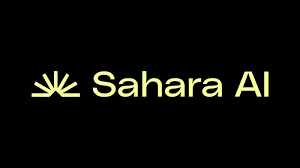
Sahara
A decentralized AI-focused blockchain ecosystem enabling creation, management, and monetization of AI assets.
Overview
Sahara AI is a decentralized ecosystem designed to empower developers, researchers, and innovators in building and deploying advanced AI solutions using blockchain technology. It offers a comprehensive platform that integrates AI dataset sourcing, annotation tools, scalable compute resources, and seamless API integrations to streamline AI development workflows. The core infrastructure is the Sahara Blockchain, a Cosmos SDK-based and Ethereum Virtual Machine (EVM) compatible network, which provides a modular, scalable, and interoperable foundation for AI applications.
The platform's Sahara Asset Protocols enable users to create, manage, and monetize AI-related assets such as datasets, models, and AI pipelines on-chain. These protocols also plan to introduce revenue-sharing mechanisms, allowing contributors to earn from their AI assets and services transparently. Sahara AI’s ecosystem addresses challenges in AI development like dataset quality, compute resource availability, and monetization by combining blockchain’s transparency and decentralization with AI tooling.
Developers can get started by exploring Sahara AI’s open-source repositories on GitHub, leveraging detailed documentation and user guides that include step-by-step tutorials, best practices, and real-world examples. The platform encourages community contributions to enhance the blockchain core and asset protocols, fostering an open innovation environment. Sahara AI is suited for teams focused on AI infrastructure, decentralized finance (DeFi) applications involving AI, and data analytics projects that benefit from blockchain integration.
The Problem
AI development faces challenges in accessing high-quality datasets, scalable compute resources, and transparent monetization models. Centralized AI platforms often limit ownership and revenue sharing for contributors, while integration complexity slows innovation.
The Solution
Key Features
Sahara Alternatives
Explore web3 competitors and apps like Sahara.

Coinbase
Pricing
Community | Enterprise | |
|---|---|---|
| Price (Monthly) | Free | Custom pricing |
| Price (Annual) | Free | Custom pricing |
| Messaging | Community support via Discord and GitHub | Dedicated support and SLAs |
| Support | Community support via Discord and GitHub | Dedicated enterprise support |
| Analytics |
Start Building Now
Reliable RPC, powerful APIs, and zero hassle.
Resources
Sahara AI provides extensive resources including GitHub repositories with open-source tools, detailed documentation with tutorials and best practices, and active community channels for collaboration and support.








